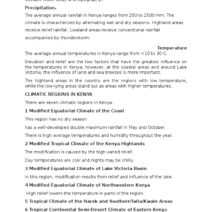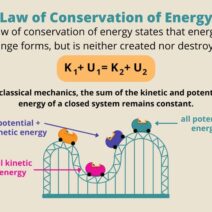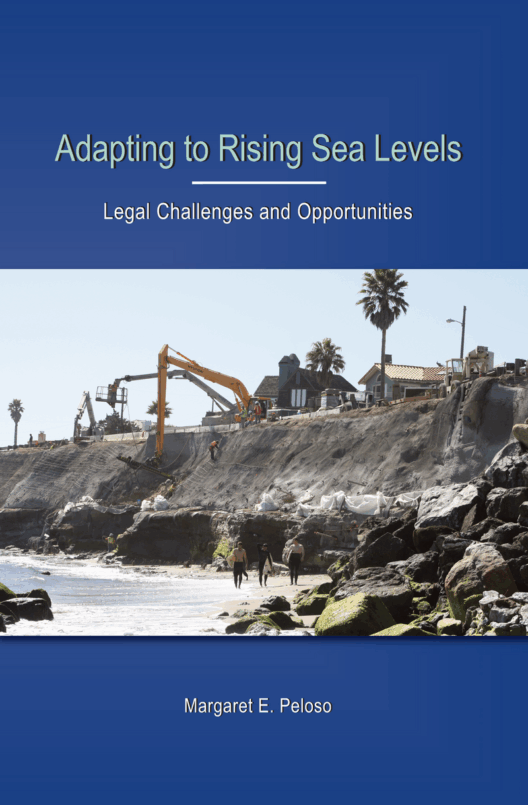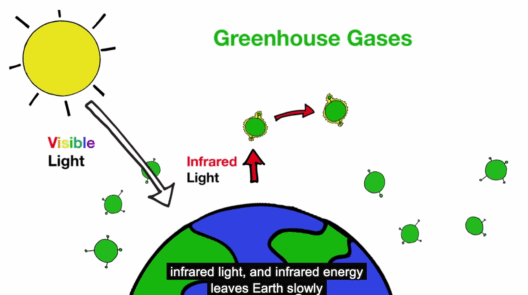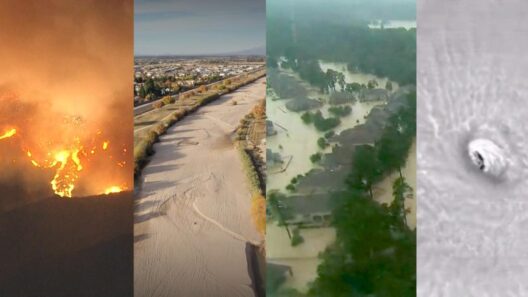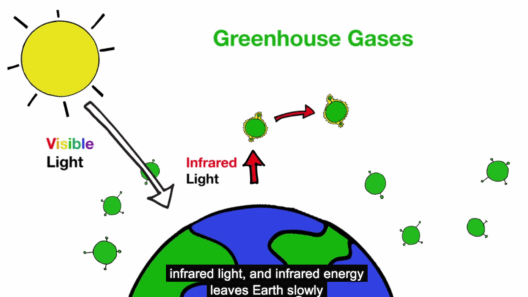As the Earth spins in its cosmic dance, we find ourselves perched precariously on a precipice, teetering towards uncertainty. Our planet, once a bastion of vibrant ecosystems and flourishing biodiversity, is now encumbered by the specter of global warming. This phenomenon, akin to a fever slowly overtaking a body, manifests dire and far-reaching environmental consequences that reverberate across every corner of our globe. The time has come to delve into the multifaceted repercussions of this existential crisis, illuminating the urgent need for collective action.
The inexorable rise in global temperatures is both a harbinger of doom and a clarion call for vigilance. In this warming world, glaciers and ice caps, the ancient sentinels of our planet’s climate, are melting at an alarming rate. As they surrender their icy grip, they release vast quantities of freshwater into the ocean, leading to a troubling rise in sea levels. This gradual inundation of coastal regions threatens the livelihoods of millions, transforming bustling cities into ghostly harbors. The imagery of a sinking Atlantis is no longer merely myth; it is a prophetic warning underscoring our vulnerability.
Equally distressing is the impact of global warming on terrestrial ecosystems. The flora and fauna that once thrived in harmonious coexistence now find themselves in a relentless struggle for survival. Alterations in temperature and precipitation patterns disrupt the delicate balance of ecosystems, pushing many species to the brink of extinction. The extinction rate is now estimated to be 100 to 1,000 times higher than the natural background rate, painting a bleak portrait of a planet devoid of its rich tapestry of life. When the hummingbird flits silently from the flower it once adored, a chord of silence deepens within our shared biosphere.
Yet, the consequences of climate change extend far beyond the natural world; they infiltrate the very fabric of human society. Agriculture, the cornerstone of civilization, is increasingly jeopardized by erratic weather patterns. Droughts become more pervasive, and floods more devastating, thwarting food production and leading to famine. This agricultural instability fuels not only nutritional insecurity but also sociopolitical unrest, as populations grapple with scarcity. The specter of food deserts looms larger, casting shadows over communities and exacerbating existing inequalities.
Moreover, global warming catalyzes a surge in extreme weather phenomena. Hurricanes gain intensity, wildfires rage uncontrollably, and heatwaves become commonplace, subjecting humanity to their wrath. These natural disasters frequently displace populations, engendering a new class of climate refugees—individuals uprooted from their homes, forced to traverse borders in search of safety and stability. The rise of such refugees introduces strains on resources and governance, igniting tensions and conflicts that echo the persistent drumbeat of inequality.
Water, a critical elixir for life, becomes increasingly scarce as climate aberrations shift precipitation patterns. Regions once known for lush greenery may find themselves transformed into arid landscapes, bereft of the glorious rivers that once nourished them. Conversely, areas susceptible to heavy rainfall face infrastructure degradation, with urban centers struggling to cope with deluges that overwhelm drainage systems. The duality of drought and flood serves as a stark reminder of nature’s fury, laying bare the fragility of the systems we have come to depend upon.
Furthermore, the intricate connections between global warming and public health cannot be overstated. As temperature rises, the prevalence of vector-borne diseases escalates, with malarial mosquitoes expanding their range into previously temperate zones. Allergens proliferate alongside rising temperatures, aggravating respiratory conditions and increasing health care demands. Mental health issues burgeon as communities experience loss and trauma due to climate-induced disasters. The health of our planet is intimately intertwined with the health of its inhabitants, underscoring our shared responsibility for remedial action.
Amidst this narrative of despair, however, there exists a glimmer of hope—a burgeoning awareness and a call to arms. Grassroots movements underscore the importance of collective action and demand policies that address environmental degradation. Renewable energy sources, such as wind, solar, and hydroelectric power, emerge as beacons of potential, steering humanity away from the quagmire of fossil fuels. The transition to a circular economy—where waste is minimized, and resources are reused—stands as a testament to ingenuity and resilience.
The role of education in cultivating environmental stewards cannot be overlooked. Empowering individuals, especially the youth, with knowledge about sustainability fosters a culture of stewardship that transcends generations. As the dialogue surrounding climate change evolves, so too does the understanding that our individual choices—the products we consume, our modes of transportation, and our advocacy efforts—play a pivotal role in steering the course of our planet’s future.
In conclusion, the far-reaching consequences of global warming extend into every facet of existence, from ecosystems and agriculture to public health and social equity. As we stand at this critical juncture, the fate of our planet hinges on our collective actions. Facilitating transformative change requires a collaborative vision that embraces sustainability, innovation, and responsibility. We are the caretakers of this earth, tasked with nurturing its fragile beauty and assuring that future generations inherit a world teeming with vitality, rather than one suffocated by our neglect. Only through unwavering commitment can we aspire to restore the equilibrium of our ailing planet and safeguard the remarkable tapestry of life it holds.

